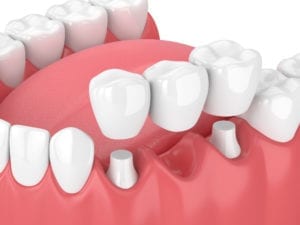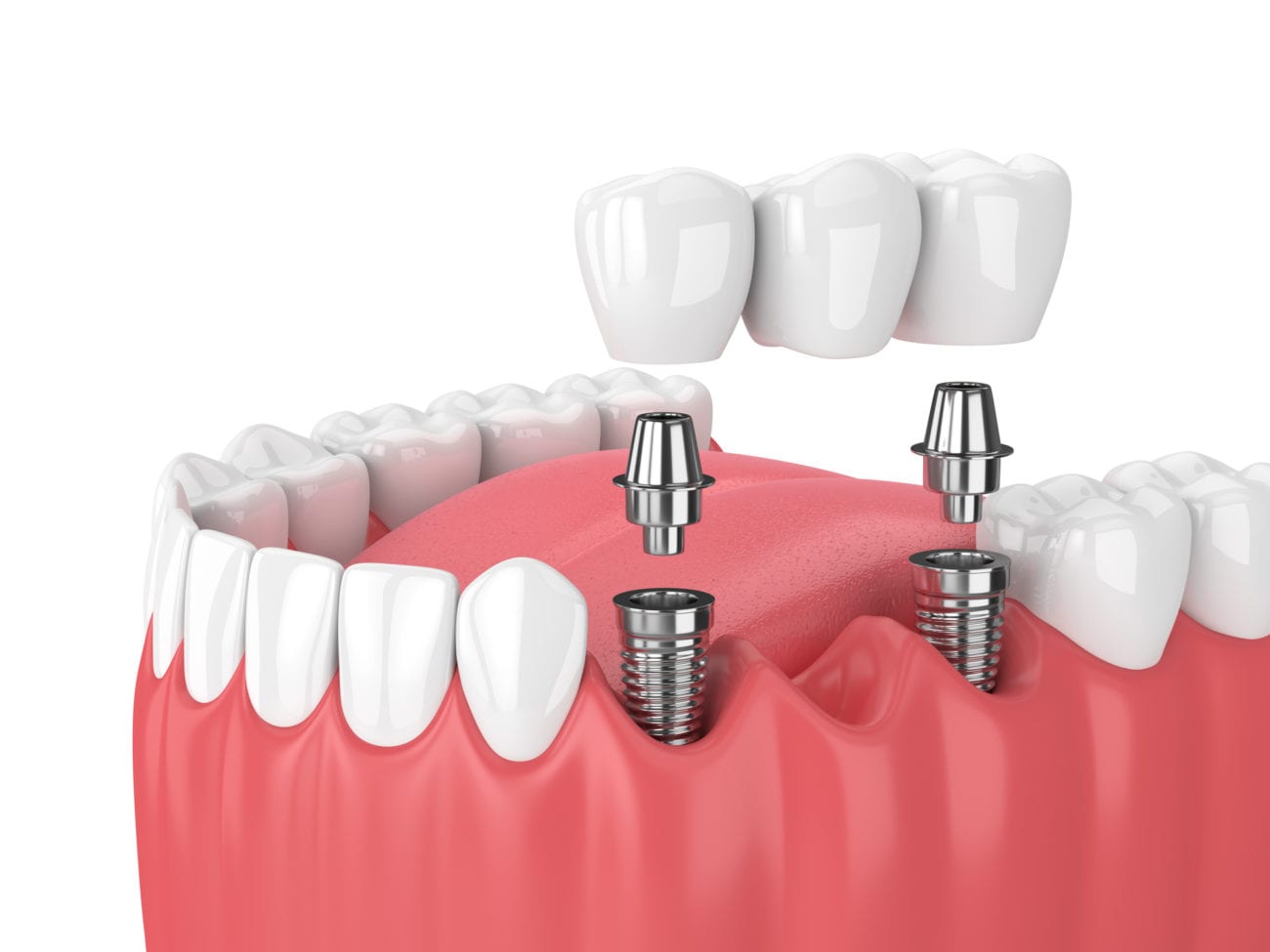A dental bridge is a popular solution for tooth loss. One of the main reasons people choose dental bridges is to restore their smile. Missing teeth can affect a person’s confidence and self-esteem. A bridge fills in the gap left by the missing tooth, enhancing the appearance of your smile.
Dental bridges also serve the important purpose of restoring the ability to chew and speak properly. When you lose a tooth, it can affect the alignment of your bite and make it challenging to eat certain foods. By bridging the gap, a dental bridge allows for normal chewing and speaking abilities.
Another reason is that dental bridges are a fixed prosthetic solution. They permanently sit next to neighboring teeth. This provides stability and eliminates the need to remove and clean the bridge daily, as is the case with removable dentures.
Dental bridge treatment is one of the dental services Bella Smiles offers in our Nesconset, NY, dental office. Keep reading to learn about each type of bridge available!
Types of Dental Bridges

Traditional Bridge
A traditional bridge is a single piece with two dental crowns on each end and the replacement teeth (the pontics) in the middle. This type of restoration can replace one or two teeth. It requires the use of the two teeth located on each side of the gap created by the missing teeth.
To prepare for a traditional bridge, your dentist will recontour the two adjacent teeth. By reducing them in size, it creates room for dental crowns. Then your dentist will cement the crowns in place. The pontics will rest on the gums and function as the replacement teeth.
Cantilever Bridge
A cantilever bridge is also a single piece but only uses teeth on one side of the gap to secure it. It has one or two crowns and one or two pontics. If possible, your dentist will use two teeth on one side of the gap to secure it. However, it is possible to only use one if that tooth has a strong root structure.
A dentist will prepare the one or two adjacent teeth the same way as a traditional bridge. They will reduce the size of the teeth to accommodate the dental crowns. The bridge will be cemented to the abutment teeth. We only recommend using this type of bridge in areas where there is infrequent chewing like the small front teeth.
Maryland Bridge
A Maryland bridge can replace a single missing tooth. It is similar to a traditional dental bridge however it uses metal wings instead of crowns to secure the replacement tooth. On both sides of the false tooth are thin metal wings that your dentist will bond to the back of the two adjacent teeth with a composite resin.
A benefit of using this method is that your dentist will need to remove any tooth enamel to accommodate the restoration. The downside is the restoration will need to be re-bonded often and it is not as durable as a traditional bridge.
Dental Implant Supported Bridge

An implant bridge can replace two or more teeth. The bridge piece has two dental crowns with the pontics in the middle. It is similar to a traditional bridge however a dentist will secure it to dental implants instead of adjacent teeth.
Your dentist will place at least two dental implants in the jaw bone via a surgical procedure. After a period of healing, typically three to six months, your dentist will secure the bridge to the implants.
Dental Bridges vs. Dental Implants
Dental implants offer a long-term solution for missing teeth. When patients qualify, Dr. Lotardo will recommend them over other traditional restorations.
Bridges rely on the support of adjacent teeth, which the dentist prepares and crowns to support the artificial tooth (pontic). These adjacent teeth act as anchors for the bridge. In the process, the bridge helps to prevent shifting and tilting of neighboring teeth, effectively preserving their alignment. However, dental implants do not need to rely on adjacent teeth or need to reduce them to make room.
Compared to other tooth replacement options like dental implants, bridges are generally more affordable. The process of getting a dental bridge is typically less invasive and requires fewer appointments than implants, resulting in lower costs.
Dental bridge placement usually takes fewer visits compared to other tooth replacement options, such as dental implants or orthodontic treatments. Once the dentist finalizes the bridge design, they can fabricate and place it within a few appointments, providing a relatively quick solution for tooth loss.
Schedule a Dental Exam & Bridge Consultation Today
Dr. Sal Lotardo is a dentist that provides expert dental care to patients suffering from damaged or missing teeth. If you suffer from tooth loss, Dr. Lotardo will help you decide which replacement option is right for you at our dental office in Nesconset, NY. He will explain the pros and cons of each treatment.
To schedule an appointment with Dr. Lotardo at his Nesconset, NY dentist office, please call 631-228-8780 (Nesconset Office) or 631-574-3898 (Riverhead Office) or 516-217-6668 (Roslyn Office) or request an appointment online. At your appointment, will discuss which type of dental bridge is right for you.
